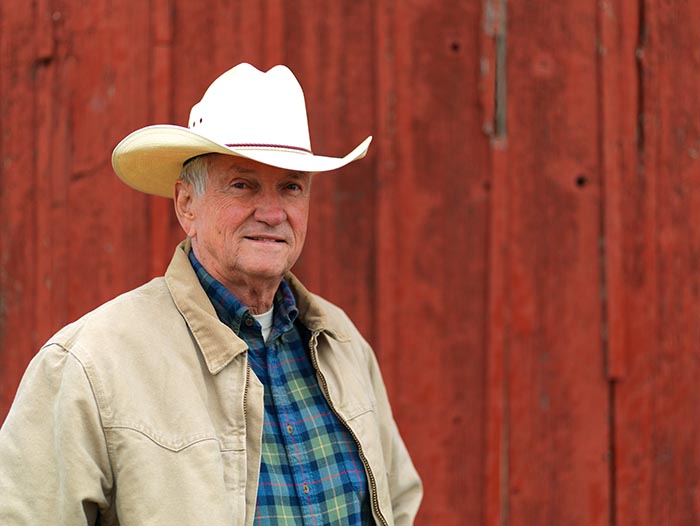
At the intersection of Starkey and Ulmerton Roads there are two gas stations, a Budweiser warehouse and an adult video emporium. Thousands of cars pass through the major junction in Largo every day and its constant congestion is a regular topic of discussion on morning traffic reports.
However, 80 years ago the scene at this throughway was much different. Cattle roamed free at J.B. Starkey’s Ulmerton Ranch and men spent their days ranching. Florida today may be known for its beaches and the omnipresence of Walt Disney’s legacy, but the state is home to the nation’s first cowboys, where ranchers once went neck and neck with Texas in terms of cattle production. Like much of Florida at the turn of the 19th Century, Tampa Bay was a major hub for cattle.
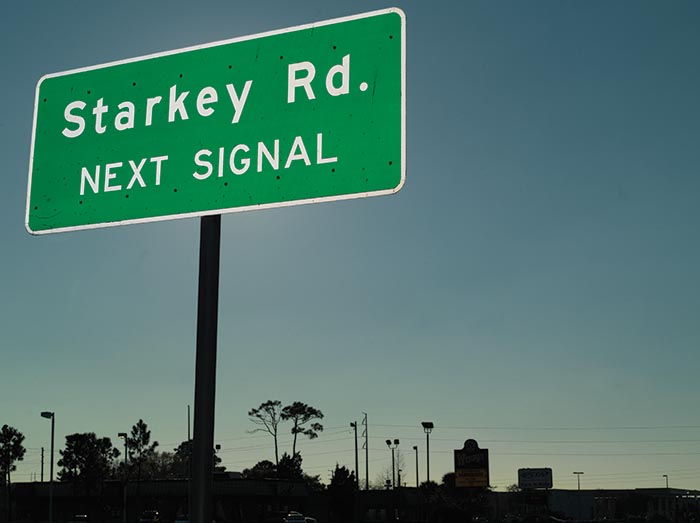
But most cattle ranches in the area, including Starkey’s Ulmerton Ranch, are gone. J.B. Starkey Jr. says his father felt the pressure from the real estate boom during the thirties, sold his 665 acres in Largo and moved north to his massive property in Pasco County. Starkey paid $2.50 an acre for 16,000 acres in Odessa. Much of it was sold to the state, which preserved nearly half the property and designated a portion as Starkey Park. The family only owns about 2,500 acres of the remaining land.
In the second of our four part series on cattle ranching in Tampa Bay, we sat down with the Starkey family to discuss their history, Florida cowboys and the struggle of passing property from one generation to the next.
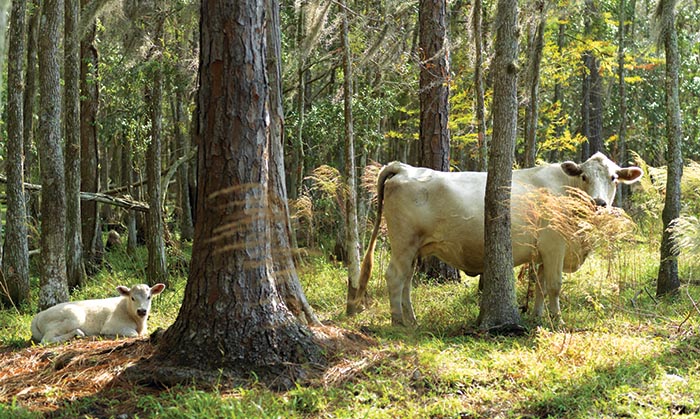
J.B. Starkey Jr. says cattlemen are inherently practical folk. Wave enough money in their faces and odds are they’ll listen. Starkey likes to call it pragmatism. He says his father was very pragmatic. While he is more emotionally attached to his land, his father saw property as a way to have cattle and security.
“Stocks and bonds go away but land won’t,” Starkey Jr. says. “Even in bad times, you’ve still got it. Paper doesn’t last.”
After spending a few years as a post office employee, Starkey Sr. bought his first 20 acres southeast of Largo in the twenties for $60. He wanted to be a cattle rancher so he moved to Largo and bought a little house for his wife and daughter. He slowly purchased land when he had the extra money.
At his prime, Starkey Sr. raised hogs and cattle on about 665 acres in Largo. He called it Ulmerton Ranch, named after the Ulmer family who ran a turpentine business in the area. Starkey Jr., 75, remembers walking through the palmettos along what is now Starkey Road, hunting with his dog. Today, commercial and residential buildings dot the areas where cattle once roamed.
“The cattle business in Florida is a good living but it’s no way to get rich,” he says. “People do it because they love it. It’s not quick money.”
Starkey’s property was too valuable for cattle operation and he knew Ulmerton Ranch would never last in Largo. His son says the area was rife with low-quality, cheap homes that sprouted up across Pinellas County like weeds after World War II.
To prepare for the influx, in the thirties Starkey partnered with the Cunningham Brothers from Pasco County and purchased 16,000 acres in Odessa to hold his cattle. They named their land the C-S Ranch. Starkey then sold his 665 acres in Largo and watched strip malls and suburbia take over. His son said he felt awful about how the land was developed.
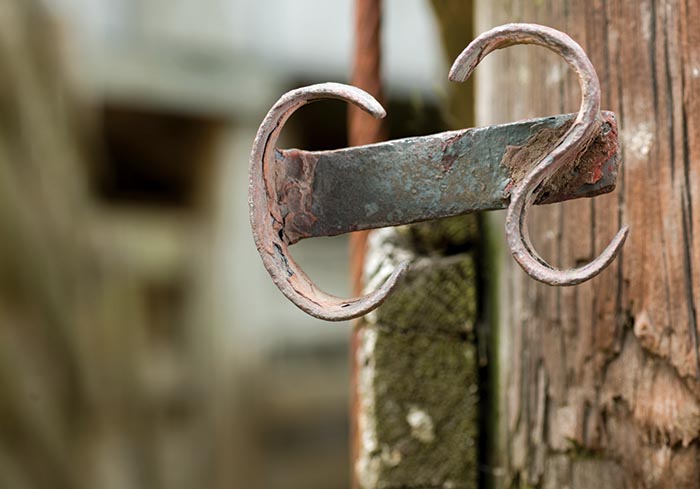
“He didn’t cry over it,” Starkey Jr. says of his father’s impression on Largo, “but he didn’t particularly like it.”
Starkey had a buy-out agreement with the three Cunningham brothers that said if one of the four partners dies, the remaining owners would have the option to buy or sell that person’s share of the property. Starkey was the youngest of the four men and outlived them by several years.
He took full ownership of the land in 1956 when the last Cunningham brother passed away. Starkey renamed the property to Anclote River Ranch and in the 1970s, sold roughly the north half of the land – about 8,000 acres – to SWFMD, 250 acres of which was donated to the park facilities area off the Suncoast Parkway Trail.
Starkey believed in conservation and keeping wilderness for future generations to enjoy. That legacy lives on at the Jay B. Starkey Wilderness Park and in the hearts of his family members. Starkey Sr. died in 1989 and his son has made sure his father’s land isn’t being treated like the Ulmerton Ranch.
“I want a man to be able to bring his children and see it how I saw it, how God almighty made it,” Starkey says of the J.B. Starkey Wilderness Park. “Without that there won’t be any places to see natural Florida.”
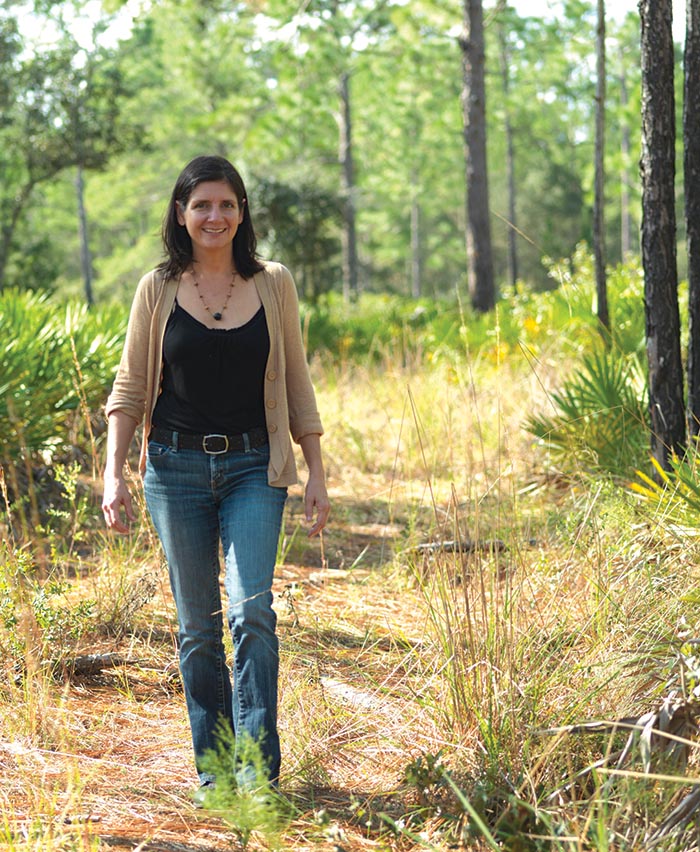
In the mid 1990s, the family sold another 3,500 acres to the Florida Department of Transportation, who needed mitigation credits for their construction of the Suncoast Parkway. The land served two purposes in that swap: it allowed the family to pay off their estate tax bill and added more land to Starkey Park, which expanded to 12,500 acres.
While Starkey says his time was full of pioneers, the current generations have lost interest in the practice. He says dryly that “things don’t stay the same.” But the hard work of passing the property on to other generations as worked well for Starkey Jr.
His children are dedicated to preserving the family’s legacy as conservationists. With the land they have left – about 2,600 acres – the Starkey children, Frank, Laura, Sarah, Trey and his wife Kathryn, have developed a sustainable new urban neighborhood.
“About 1,000 acres of that is planned to be a mixed-use, green design, walkable-community development,” says granddaughter Laura Starkey of the Starkey Ranch project. “Using Traditional Neighborhood Design principles, the rest of the land will be kept in conservation.”
Laura says the family is trying to use and develop the land that they have left in a way that will be not only financially beneficial to the family, but with minimal impact on the environment and culture in Pasco County.
The project will be like the Longleaf community that her brothers Trey and Frank developed on 568 acres off Starkey Road and State Road 54. The traditional neighborhood development was designed to embrace a small town feel with its compact, pedestrian-friendly layout complemented by retail, office and recreational facilities.
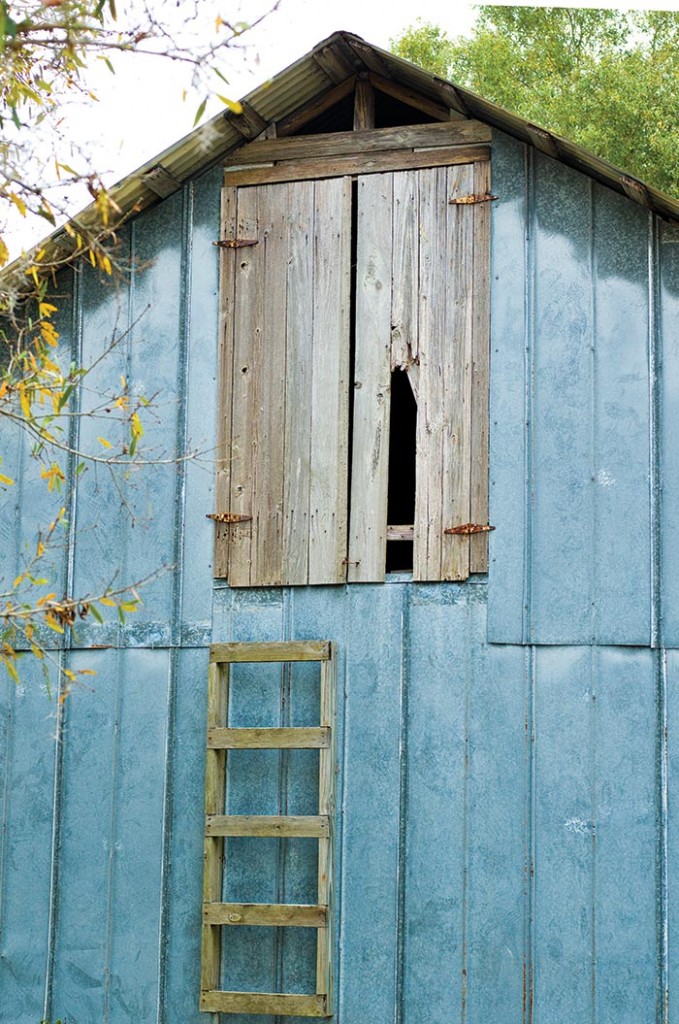
Laura says the Starkey Ranch development was slated for construction in 2010 but the current economy has forced them to place the project on the back burner.
Starkey’s land is still being used as an active cattle ranch however Starkey Jr. sold his herd about six years ago to another rancher who leases the land. The building in which the family was raised is now the ranch office and the headquarters for Laura’s nonprofit organization SCENIC, which she hopes will unite current and former Pasco County cattle ranchers.
“SCENIC ultimately ties our past and where we come from, the ranch, the land and natural environment, to where we are going,” she says. “In ecologist terminology, it’s called the wild land-urban interface. How can we connect people to nature in meaningful ways?”
Most ranching families know that economically, using their land for cattle doesn’t make sense. But the Starkeys agree that the best plan for the area and for them is to build sustainably. It’s a mindset that was instilled years ago when J.B. Starkey Sr. bought that first piece of land in Largo and watched it boom into the gas stations and mini-malls that it is today.
“Because Florida is so much shifting sand, so to speak, our ranching history is a solid steady thing,” she says. “For a region seeking to know itself we need to know our own stories. If we (Tampa Bay) want to create a sense of place, or have a sense of place, to me it is most logical and authentic if we approach it from the perspective of our own roots. Soak our roots and they’ll grow deeper.”
